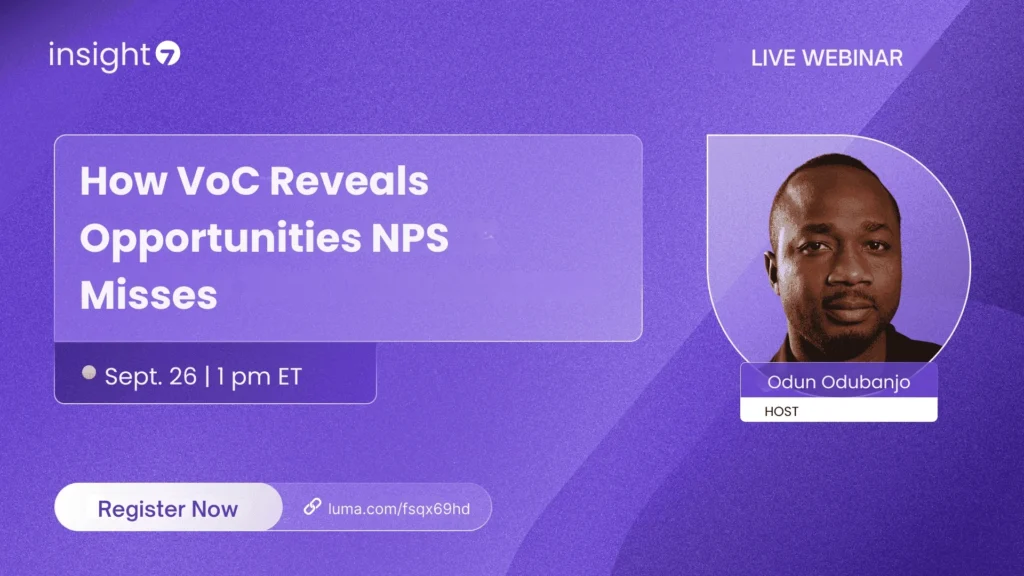Using AI Call Analytics for Live Upsell and Cross-Sell Prompts
-
Bella Williams
- 10 min read
AI-powered call analytics is revolutionizing the way businesses engage with their customers, particularly in the realm of upselling and cross-selling. By leveraging advanced technologies, organizations can transform voice conversations into actionable insights that drive revenue growth and enhance customer relationships. This innovative approach not only identifies opportunities for additional sales but also fosters a deeper understanding of customer needs, leading to more personalized interactions and improved satisfaction.
Current Market Urgency for AI-Powered Call Analytics
Sales conversations are often fraught with challenges, especially when it comes to recognizing upsell and cross-sell opportunities. Traditional methods, such as manual call reviews, frequently fall short in capturing the nuances of customer interactions. These methods can overlook critical cues and preferences that indicate a customer's readiness to consider additional products or services.
Moreover, the limitations of manual call review processes—often reliant on sampling a mere fraction of calls—fail to provide a comprehensive understanding of customer sentiment and intent. As customer expectations evolve towards more personalized experiences, the need for AI-powered solutions becomes increasingly urgent. Compliance requirements further necessitate the adoption of these technologies, ensuring that upsell strategies adhere to regulatory standards while maximizing customer engagement.
What Is AI-Powered Call Analytics in Simple Terms?
AI-powered call analytics refers to the use of artificial intelligence to analyze voice conversations in real-time, transforming them into valuable business intelligence. Unlike traditional call monitoring systems that merely record conversations, AI analytics actively assesses customer sentiment, intent, and emotional cues during interactions. This capability allows organizations to identify timely upsell prompts based on the dynamics of each conversation.
By harnessing AI, businesses can unlock significant customer experience improvements and drive better business outcomes. For instance, AI can highlight moments in conversations where customers express interest in additional products, enabling agents to respond proactively and effectively.
What Can Organizations Actually Do With AI-Powered Call Analytics?
Organizations can leverage AI-powered call analytics to achieve a range of measurable outcomes, including:
- Real-time sentiment monitoring → Prevent customer escalations and identify upsell opportunities based on emotional cues.
- Automatic conversation summarization → Reduce post-call admin time by 70% and highlight potential upsell moments.
- Compliance violation detection → Eliminate regulatory risks while ensuring upsell strategies adhere to guidelines.
- Performance coaching insights → Improve sales conversion rates by identifying winning conversation patterns that lead to successful upsells.
- Customer intent prediction → Increase upsell opportunities through behavioral analysis and tailored recommendations.
- Competitive mention tracking → Gather market intelligence to refine upsell strategies based on competitor offerings.
Corporate Investment Trends in AI-Powered Call Analytics
The push for AI-powered call analytics is driven by several key business factors, particularly the need for personalized customer engagement. Organizations are increasingly recognizing the pain points associated with missed upsell opportunities, compliance blind spots, and customer churn. AI analytics directly addresses these challenges by providing insights that enhance the speed, personalization, and forecasting capabilities of sales teams.
As businesses strive to create more meaningful customer interactions, the advantages of AI over traditional approaches become clear. AI not only identifies upsell and cross-sell opportunities more effectively but also enables organizations to respond to customer needs in real-time, fostering loyalty and satisfaction.
What Data Makes AI-Powered Call Analytics Work?
Effective AI-powered call analytics relies on a variety of essential input data types, including call audio, customer context, and historical outcomes. Integrating multiple data sources—such as CRM systems, product data, and agent performance metrics—enhances the accuracy and relevance of AI analysis in identifying upsell opportunities.
A robust data foundation is crucial for generating actionable insights that align with customer needs. By leveraging comprehensive data, organizations can better understand customer behavior and preferences, ultimately leading to more effective upselling strategies.
AI-Powered Call Analytics Operational Framework
To visualize the operational framework of AI-powered call analytics, consider the following steps:
- Data Sources: Voice data is collected from various channels, including phone systems, video calls, and recorded meetings.
- Speech-to-Text Conversion: AI converts speech to text, identifying speakers and timing for accurate analysis.
- Pattern Identification: The system detects sentiment shifts, objection handling techniques, and closing strategies.
- Model Improvement: Historical conversation data and business outcomes are used to refine AI models continuously.
- Real-Time Insights: Insights are delivered during calls and in post-call analytics, specifically targeting upsell prompts.
- Feedback Loop: Results are tracked and integrated into coaching and process improvement initiatives to enhance upselling strategies.
Where Can AI-Powered Call Analytics Be Applied?
AI-powered call analytics can be applied in various use cases, each delivering specific benefits:
- Sales Team Performance: Conversation intelligence boosts win rates by analyzing objection handling and identifying upsell opportunities.
- Customer Service Outcomes: Real-time coaching enhances first-call resolution rates while pinpointing upsell chances.
- Retention Strategies: Sentiment monitoring identifies at-risk customer conversations that may benefit from targeted upsell strategies.
- Compliance Monitoring: Ensures regulatory adherence across all customer interactions while facilitating upsell discussions.
- Market Positioning: Competitive intelligence gathering refines pricing strategies and enhances upselling efforts.
Platform Selection and Tool Evaluation
When selecting an AI-powered call analytics platform, organizations should prioritize critical features that enhance upselling capabilities, including:
- Speech Recognition Accuracy: Ensures reliable transcription and analysis of customer conversations.
- Real-Time Processing: Provides immediate insights for timely upsell interventions.
- CRM Integration: Facilitates seamless updates and data sharing across systems.
- Multilingual Support: Accommodates diverse customer bases and enhances global engagement.
A comparison of AI-powered analytics platforms with traditional call monitoring systems highlights the advantages for upselling strategies:
| Feature | AI-Powered Platform | Traditional Approach |
|---|---|---|
| Coverage | 100% of calls analyzed | 5-10% manual sampling |
| Speed | Real-time insights for upselling | Post-call manual review |
| Consistency | AI-driven objective scoring | Subjective human evaluation |
| Scalability | Enterprise-wide deployment | Limited by QA team capacity |
| Integration | Automated CRM and workflow updates | Manual data entry and follow-up |
Common Challenges in Implementing AI-Powered Call Analytics
Organizations may encounter several challenges when implementing AI-powered call analytics, including:
- Audio Quality Issues: Poor setup can lead to inaccurate transcription and analysis.
- Misalignment on Success Metrics: Lack of consensus on upselling success criteria across teams.
- Over-Reliance on Automation: Insufficient human validation and context can undermine effectiveness.
- Training Gaps: Teams may struggle to interpret and act on AI-generated insights for upselling.
- Workflow Integration Weaknesses: Difficulty in embedding AI insights into existing coaching processes.
AI-Powered Call Analytics Implementation Roadmap
To successfully implement AI-powered call analytics, organizations can follow this practical action plan:
- Integration: Connect with existing phone systems, CRM platforms, and contact center infrastructure.
- Data Syncing: Align historical call recordings and customer data for AI model training.
- Dashboard Configuration: Create role-specific dashboards for agents, managers, and executives to track upsell opportunities.
- Model Training: Refine AI models using business-specific terminology and success criteria related to upselling.
- Pilot Rollout: Launch pilot use cases with high-impact teams (sales, support, compliance) focusing on upsell strategies.
- Deployment Expansion: Optimize and expand deployment based on feedback loops and continuous learning.
What Does an Ideal AI-Powered Call Analytics Setup Look Like?
To maximize ROI and user adoption across customer-facing teams, organizations should adhere to best practices, including:
- Structured Review Cycles: Establish regular intervals for reviewing AI insights and coaching processes centered around upselling.
- Historical Data Utilization: Determine the ideal amount of historical conversation data needed for accurate AI model training specific to upselling.
- Balance of Insights: Maintain a balance between automated insights and human expertise in decision-making processes.
Success Metrics and Performance Tracking
Key metrics for measuring the effectiveness of AI-powered call analytics in enhancing upselling efforts include:
- Sales Conversion Rate Improvement: Analyze conversation patterns to identify successful upselling strategies.
- Customer Satisfaction Score Increases: Monitor sentiment and timely upsell interventions to gauge customer happiness.
- First-Call Resolution Improvements: Leverage real-time coaching to optimize upsell opportunities during initial interactions.
- Compliance Violation Reduction: Utilize automated monitoring to ensure adherence to regulations during upsell discussions.
- Agent Performance Improvement: Measure coaching effectiveness and upsell success rates to evaluate agent development.
- Revenue Impact: Assess the financial benefits derived from identifying and executing upsell and cross-sell opportunities.
The universal principle remains: success stems not from merely having call analytics but from effectively using AI insights to enhance customer conversations and drive business outcomes, particularly in upselling and cross-selling efforts.
FAQs About AI-Powered Call Analytics
- What is AI-powered call analytics? → Technology that uses speech recognition, NLP, and machine learning to analyze customer conversations for upsell opportunities.
- How is it different from call recording? → Active analysis vs. passive storage – provides real-time insights and actionable recommendations for upselling.
- Can it integrate with our CRM and phone systems? → Yes, most platforms offer APIs and pre-built connectors for popular business tools, enhancing upsell strategies.
- How much conversation data is needed? → Typically 3-6 months of historical calls for effective model training and baseline establishment, particularly for upselling.
- Is it compliant and secure? → Enterprise platforms meet SOC2, GDPR, HIPAA, and other security standards, ensuring compliance during upsell discussions.
- What's the typical ROI timeline? → Initial insights within weeks, measurable business impact from upselling within 3-6 months.
Final Takeaway
AI-powered call analytics is essential for the future of customer engagement and business growth, particularly in enhancing upselling and cross-selling strategies. By transitioning from reactive call reviews to proactive conversation optimization, organizations can significantly improve their upselling efforts. Teams are encouraged to evaluate platforms, pilot high-impact use cases, measure business results, and refine upsell strategies based on actionable insights.







